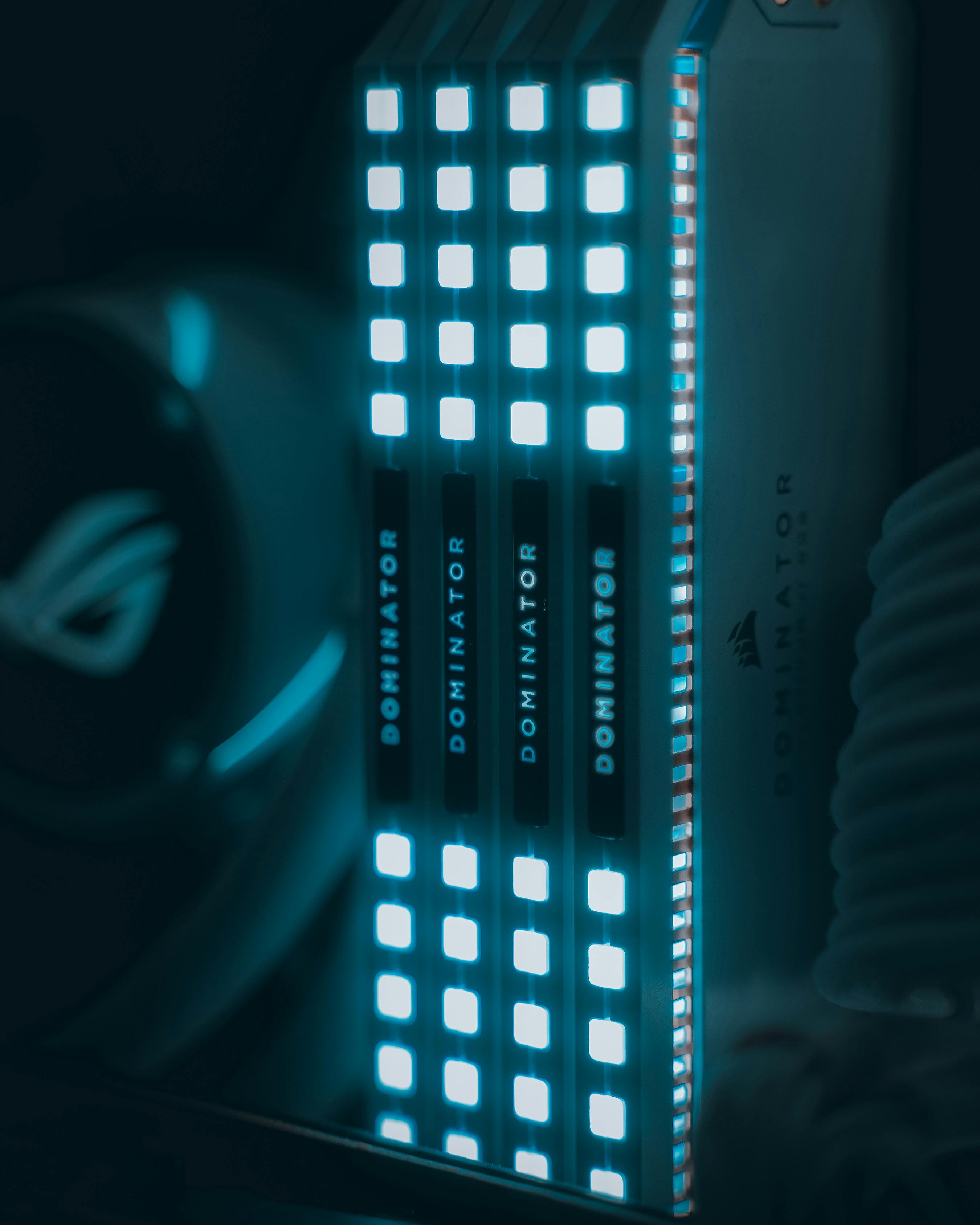Are you tired of sluggish performance on your Windows 11 device? Optimizing Windows 11 virtual memory can be the game-changer you need to unleash peak performance today! In this article, we’ll explore how to effectively tweak your virtual memory settings to ensure your system runs smoothly, even when multitasking with demanding applications. With the rapid evolution of technology, it’s crucial to stay ahead, and mastering your PC’s virtual memory is a foundational step toward achieving that goal.
Virtual memory plays a pivotal role in how your Windows 11 operates, acting as an overflow for your system’s RAM. When your physical memory fills up, Windows 11 uses this virtual memory to keep your applications running efficiently. But did you know that improper settings can lead to lagging, crashing, or even freezing? That’s why knowing how to optimize Windows 11 virtual memory is essential for gamers, professionals, and everyday users alike. Have you ever wondered why your PC feels slow during intensive tasks? The answer often lies in how your virtual memory is configured.
In this guide, we will break down the steps needed to optimize Windows 11 virtual memory for enhanced performance. From adjusting your paging file size to understanding the importance of system requirements, we’ll cover everything you need to know. If you want to take control of your Windows 11 experience and boost your system’s efficiency, read on! Your computer’s potential is waiting to be unlocked, and optimizing your virtual memory is the key to achieving that.
Unlock the Secrets: How to Fine-Tune Virtual Memory in Windows 11 for Maximum Efficiency

In today’s fast-paced digital world, optimizing your computer’s performance is more crucial than ever. One area often overlooked is virtual memory, especially in Windows 11. Unlock the secrets of fine-tuning virtual memory can make a huge difference in your system’s efficiency. This guide will help you optimize Windows 11 virtual memory for peak performance today.
What is Virtual Memory?
Virtual memory is a technology that allows your PC to use hard drive space as if it were additional RAM. It helps manage workloads when your physical memory (RAM) gets full. Windows uses a page file to handle this overflow. If your computer runs out of RAM, it starts using the page file, which can slow down your system if not managed correctly.
Why Fine-Tune Virtual Memory?
When you optimize Windows 11 virtual memory, you can enjoy several benefits:
- Enhanced system speed
- Improved multitasking capabilities
- Smoother performance during demanding tasks like gaming or video editing
- Reduced system crashes and errors
How to Optimize Windows 11 Virtual Memory
Fine-tuning your virtual memory settings is pretty simple. Here’s how to do it in a step-by-step format:
-
Open System Properties: Right-click on the Start button and select ‘System.’ Then, click on ‘Advanced system settings’ on the left side.
-
Access Performance Settings: In the System Properties window, click on the ‘Settings’ button under the Performance section.
-
Go to Advanced Tab: Navigate to the ‘Advanced’ tab where you will see a section for Virtual Memory.
-
Custom Size: Uncheck ‘Automatically manage paging file size for all drives.’ Set the Initial size and Maximum size based on your requirements. A common rule is to set it at 1.5 times your RAM for Initial size and 3 times for Maximum size.
-
Apply Changes: Click ‘Set’ and then ‘OK.’ You will need to restart your computer for changes to take effect.
Tips for Better Performance
Here are some extra tips to further enhance your virtual memory settings:
-
Monitor Resource Usage: Use Task Manager to check how much RAM and virtual memory are being used. This can help you decide if adjustments are necessary.
-
Upgrade Your RAM: If your system frequently uses a lot of virtual memory, consider adding more physical RAM. This will reduce reliance on the page file and improve overall speed.
-
Regular Maintenance: Keep your hard drive clean and defragment it if you are using a traditional HDD. An SSD doesn’t require defragmentation but still needs regular updates and maintenance.
Common Myths About Virtual Memory
There are many misconceptions surrounding virtual memory that can lead to confusion. Here are a few:
-
Myth 1: Increasing virtual memory will always speed up my computer. This isn’t true; if your system is already running efficiently, it could have little to no effect.
-
Myth 2: Virtual memory replaces the need for RAM. This is false. Virtual memory is a supplement, not a substitute, for physical memory.
-
Myth 3: More virtual memory is always better. Too much can actually lead to wasted space and can decrease performance.
Final Thoughts
Optimizing Windows 11 virtual memory is a crucial step for anyone looking to improve their system’s performance. By understanding how it works and making some adjustments, you can unlock the full potential of your computer. With just a few steps, you can ensure that your system runs smoothly and efficiently, making your tasks easier and more enjoyable. Don’t neglect this vital aspect of your computer’s performance. Optimize Windows 11 virtual memory today for a noticeable difference!
5 Game-Changing Tips to Optimize Windows 11 Virtual Memory and Boost Your System Performance

Are you tired of your Windows 11 system performing slower than a snail on a lazy Sunday? You’re not alone, and one of the key factors that can make or break your system speed is virtual memory. By optimizing Windows 11 virtual memory, you can greatly enhance your system performance. Here’s five game-changing tips to optimize Windows 11 virtual memory for peak performance today.
Understanding Virtual Memory
Virtual memory is like your computer’s safety net. It uses a portion of your hard disk to simulate extra RAM. When your physical RAM is full, Windows 11 will use this virtual memory to keep programs running smoothly. But if it ain’t optimized correctly, it can slow you down. Historically, operating systems have always struggled with managing memory efficiently, and Windows 11 is no different.
1. Adjust Virtual Memory Settings Manually
Windows 11 comes with automatic settings which might not be suited for every user. You can manually adjust your virtual memory settings by following these steps:
- Right-click on the Start button and select System.
- Click on Advanced system settings.
- Under the Performance section, click on Settings.
- Go to the Advanced tab, and under Virtual memory, click on Change.
From here, uncheck “Automatically manage paging file size for all drives” and set a custom size. Ideally, set your initial size to 1.5 times your RAM and maximum size to 3 times your RAM.
2. Use SSD for Virtual Memory
If you have a Solid State Drive (SSD), make sure your virtual memory is set to use it. SSDs are significantly faster than traditional hard drives. This means, when your system calls on virtual memory, it’ll be pulling it from a much quicker source. You’ll notice a dramatic improvement in system response time.
3. Clear Unused Applications and Background Processes
Too many applications running in the background can consume precious RAM and hinder performance. Here’s how to keep things tidy:
- Press Ctrl + Shift + Esc to open the Task Manager.
- Look for applications that you don’t need and click End Task on them.
- You can also disable unnecessary startup applications by going to the Startup tab.
Keeping your system lean helps in optimizing Windows 11 virtual memory, allowing your machine to run smoother.
4. Increase Physical RAM
Sometimes, the best option is to simply add more physical RAM. If your system is constantly using virtual memory, it might be time to consider an upgrade. Here’s a quick comparison:
- 4GB RAM: Suitable for basic tasks, but can slow down with multiple applications.
- 8GB RAM: Good for moderate multitasking and productivity.
- 16GB RAM: Ideal for gamers and heavy users who run demanding applications.
Investing in more RAM can drastically reduce your reliance on virtual memory.
5. Regularly Defragment Your Hard Drive
If you’re using a traditional hard drive, defragmenting can help. Fragmented files can slow down access time, which indirectly affects how virtual memory operates. Here’s how to do it:
- Type Defragment and Optimize Drives in the Start menu.
- Select your drive and click Optimize.
This might be more relevant for HDDs, as SSDs do not need defragmentation.
Optimizing Windows 11 virtual memory is an essential step to achieving peak performance. By following these tips, you can ensure your system runs as efficiently as possible, providing a smoother experience whether you’re gaming, working, or simply browsing the web. Don’t wait too long; implement these changes and feel the difference in speed today!
Is Your Windows 11 Sluggish? Discover How Adjusting Virtual Memory Can Revitalize Your PC

Is your Windows 11 sluggish? You might be feeling frustrated when your PC takes forever to load applications or run tasks. Often, the root of these issues lies in the settings of your virtual memory. Many users don’t realize that optimizing Windows 11 virtual memory can make a significant difference in the overall performance of your system. Let’s explore how adjusting these settings can revitalize your PC and help you get the most out of your Windows experience.
What is Virtual Memory?
Virtual memory is a portion of your hard drive that Windows uses as if it were RAM. When your physical memory (RAM) is full, Windows shifts some of that data to a space on your drive called the page file. This process allows your computer to run more applications simultaneously, but sometimes it can lead to performance slowdowns if not configured properly.
Why Adjust Virtual Memory?
Adjusting your virtual memory settings can provide several benefits:
- Improved Application Performance: Applications may load faster.
- Better Multitasking: You can run more programs at the same time without lag.
- Enhanced System Stability: Reduces the risk of crashes when memory is full.
How to Optimize Windows 11 Virtual Memory
Here are steps that can help you optimize Windows 11 virtual memory settings:
-
Access System Properties:
- Right-click on the Start button and select System.
- Click on Advanced system settings on the left sidebar.
-
Open Performance Options:
- In the System Properties window, click on the Advanced tab.
- Under the Performance section, click on Settings.
-
Adjust Virtual Memory:
- Go to the Advanced tab in the Performance Options window.
- Click on the Change button under the Virtual Memory section.
- Uncheck Automatically manage paging file size for all drives.
-
Set Initial and Maximum Size:
- Select your system drive (usually C:).
- Choose Custom size and enter values for Initial size and Maximum size. A common recommendation is to set the initial size to the amount of RAM you have, and the maximum size to double that amount.
-
Apply Changes:
- Click on Set, then OK, and restart your PC to apply the changes.
Best Practices for Virtual Memory Settings
- Monitor Your Usage: Keep an eye on how much RAM your applications are consuming. Use Task Manager to find out if you need to adjust your virtual memory.
- Regular Maintenance: Run disk cleanup and defragment your hard drive, which can also help with overall performance.
- Consider Upgrading RAM: If you find that you are consistently using a lot of virtual memory, it may be more effective to upgrade your physical RAM instead.
Common Myths About Virtual Memory
-
Myth 1: More virtual memory always means better performance.
- Fact: Too much virtual memory can lead to excessive disk usage, which may slow down your system.
-
Myth 2: Virtual memory can replace physical RAM.
- Fact: Virtual memory is a workaround, not a substitute for physical RAM.
-
Myth 3: You don’t need to adjust virtual memory settings.
- Fact: Customized settings can enhance performance tailored to your specific usage patterns.
If your Windows 11 system feels sluggish, adjusting the virtual memory settings might just do the trick. Regularly optimizing Windows 11 virtual memory can help maintain peak performance, ensuring your PC runs smoothly and efficiently. Don’t let sluggishness slow you down—take charge of your system’s performance today!
Step-by-Step Guide: Mastering Virtual Memory Settings in Windows 11 for Lightning-Fast Speed

Windows 11 has become popular among users, but many people still struggle with its virtual memory settings. If you want your system to run smoothly and quickly, mastering the virtual memory is essential. This step-by-step guide is here to help you optimize Windows 11 virtual memory for peak performance today.
Understanding Virtual Memory
Virtual memory is a critical aspect of an operating system. It allows your computer to use a part of the hard drive as temporary memory when the physical RAM is full. This process helps in running multiple applications without crashing, but if the settings aren’t right, it could slow your system down. Windows 11 makes managing virtual memory somewhat easier, but you can still fine-tune the settings for better speed.
Why Optimize Virtual Memory?
Optimizing virtual memory can lead to noticeable improvements in performance. Here’s why you should consider it:
- It helps in managing larger applications and multitasking.
- Reduces lag and response time, especially in intensive tasks like gaming or video editing.
- Improves overall system stability and can help prevent crashes.
Step-by-Step Guide to Optimize Virtual Memory in Windows 11
-
Open System Properties:
- Right-click on the Start button and select System.
- Scroll down and click on About on the left side.
- Click on Advanced system settings on the right. This opens the System Properties window.
-
Adjust Performance Settings:
- In the System Properties window, under the Advanced tab, click on the Settings button in the Performance section.
- A new window will pop up. Here, select the Advanced tab again.
-
Virtual Memory Settings:
- Click on the Change button in the Virtual Memory section.
- Uncheck the box that says Automatically manage paging file size for all drives. This step is crucial for manual adjustments.
-
Set Custom Size:
- Select the drive where Windows is installed (usually C:).
- Click on Custom size and enter the initial and maximum size. A good rule of thumb is to set the initial size to 1.5 times your RAM and the maximum size to 3 times your RAM.
- For example, if you have 8GB of RAM, you should set the initial size to 12GB (12288 MB) and the maximum size to 24GB (24576 MB).
-
Apply Changes:
- After entering the numbers, click on Set, then OK. You might need to restart your computer for changes to take effect.
Tips for Maintaining Optimal Virtual Memory
- Regularly Monitor Usage: Use Task Manager to check how much virtual memory is being used.
- Disk Cleanup: Regularly perform disk cleanups to free up space. This can help in managing virtual memory better.
- Upgrade RAM: If you often run heavy applications, consider upgrading your RAM. This can reduce reliance on virtual memory.
Common Mistakes to Avoid
- Setting virtual memory too low can cause issues, while setting it too high can waste disk space.
- Forgetting to check disk space on the drive where virtual memory is allocated. If there’s not enough, it can lead to performance issues.
Mastering the virtual memory settings in Windows 11 can be a game changer for your system performance. With the right adjustments, you can ensure that your PC runs as fast as possible, maximizing efficiency whether for work or play. So follow these steps, and experience the difference in speed and responsiveness today!
The Ultimate Checklist: Enhance Your Windows 11 Virtual Memory for Seamless Multitasking and Gaming

Are you tired of your Windows 11 system slowing down when you’re trying to multitask or enjoy your favorite games? If so, you’re not alone. Many users struggle with this issue, and a common culprit is often the virtual memory settings. Optimizing Windows 11 virtual memory can dramatically improve performance, making it smoother and more enjoyable. Here’s the ultimate checklist to help enhance your virtual memory settings for seamless multitasking and gaming.
Understanding Virtual Memory in Windows 11
Virtual memory is a crucial component that allows your system to use disk space as an extension of RAM. It helps your computer handle multiple tasks efficiently, especially when the physical RAM is insufficient. Windows 11 manages virtual memory automatically, but manual optimization can lead to even better performance.
Why Optimize Virtual Memory?
- Better Performance: When virtual memory is optimized, your system can handle more applications simultaneously, reducing lag.
- Improved Gaming Experience: Games often require significant memory resources, and fine-tuning virtual memory can prevent stuttering and crashes.
- Enhanced Productivity: If you work with resource-heavy applications like video editors or CAD software, having an optimized system allows for smoother operation.
The Ultimate Checklist to Optimize Windows 11 Virtual Memory
-
Check Your RAM Size
- Determine how much RAM you currently have.
- Windows 11 recommends a minimum of 4 GB, but 8 GB or more is ideal for gaming and multitasking.
-
Adjust Virtual Memory Settings
- Right-click on “This PC” and choose “Properties.”
- Click on “Advanced system settings” and go to the “Performance” section.
- Click on “Settings” and then navigate to the “Advanced” tab.
- Under “Virtual memory,” click “Change.”
-
Set Custom Paging File Size
- Uncheck “Automatically manage paging file size for all drives.”
- Select your system drive (usually C:) and set the initial size to 1.5 times your RAM and the maximum size to 3 times your RAM.
- For example, if you have 8 GB of RAM, set the initial size to 12 GB (12288 MB) and the maximum to 24 GB (24576 MB).
-
Disable Hibernation
- Hibernation uses a portion of your disk for saving system state, which can impact virtual memory.
- Open Command Prompt as an administrator and type
powercfg -h offto disable it.
-
Regular Maintenance
- Perform regular disk cleanup to remove unnecessary files that can take up space.
- Use the built-in Disk Cleanup tool or third-party software for better results.
-
Monitor Performance
- Use Windows Task Manager to monitor memory usage.
- If you notice that the system is still sluggish, consider upgrading your physical RAM.
-
Update Drivers
- Ensure your drivers are up to date, especially graphics drivers, as they can impact gaming performance.
- Use Windows Update or visit the manufacturer’s website for the latest drivers.
Troubleshooting Common Issues
- Lagging Applications: If certain applications continue to lag, try closing unused programs to free up resources.
- Crashing Games: Check the compatibility of your games with Windows 11 and update them regularly.
- High Disk Usage: If the disk usage is constantly high, consider checking for malware or unnecessary background processes.
By following this checklist, you can optimize Windows 11 virtual memory for peak performance today. This not only enhances your system’s ability to multitask but also ensures a smoother gaming experience. Don’t let slow performance ruin your workflow or gaming sessions; take control of your virtual memory and enjoy a more efficient Windows 11 experience.
Conclusion
In conclusion, optimizing virtual memory in Windows 11 is essential for enhancing system performance and ensuring smooth multitasking. By understanding the role of virtual memory and adjusting settings such as the paging file size, you can significantly improve your device’s responsiveness, especially when running resource-intensive applications or games. Remember to monitor your system’s performance and make adjustments as needed, as each configuration may vary based on individual usage patterns and hardware capabilities. Regularly clearing out unnecessary files and managing your physical RAM can further complement your virtual memory optimization efforts. As you implement these strategies, you’ll not only boost your computer’s efficiency but also extend its lifespan. Take the time today to fine-tune your virtual memory settings and experience the difference in your daily computing tasks. Don’t hesitate to explore additional resources and tools available to maximize your Windows 11 experience!

